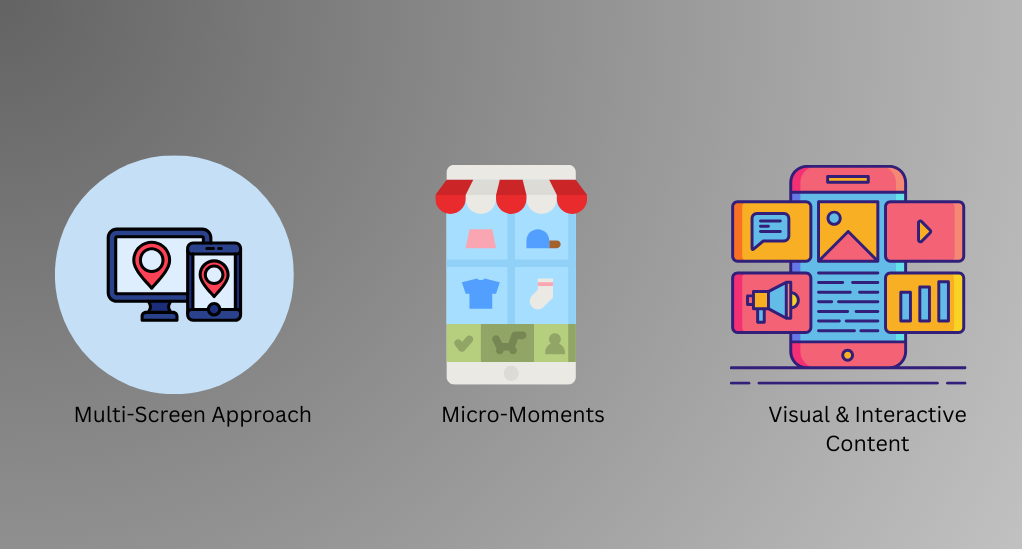How to Optimize Your E-commerce Website for Mobile Users: A Comprehensive Guide
In the dynamic world of e-commerce, staying ahead of the curve is not just an advantage but a necessity. The advent of mobile technology has revolutionized the way consumers shop, making it imperative for e-commerce platforms to optimize for mobile users. In this section, we will explore the significance of mobile optimization and the current trends shaping the mobile e-commerce landscape.
The Importance of Mobile Optimization

A Paradigm Shift in User Behavior
In recent years, there has been a significant shift from desktop to mobile shopping. The convenience of browsing and shopping on the go has led to a surge in mobile users. According to a report by OuterBox, as of 2021, 79% of smartphone users have made a purchase online using their mobile device in the last 6 months. This statistic underscores the pressing need for e-commerce websites to optimize for mobile users to stay competitive.
Enhancing User Experience
Mobile optimization is not just about making your website accessible on mobile devices; it’s about creating a seamless and engaging user experience. A mobile-optimized website ensures faster loading times, easier navigation, and a layout that resonates with the mobile user interface, thereby enhancing the overall user experience.
Current Trends in Mobile E-commerce
- Progressive Web Apps (PWAs)
PWAs are web applications that utilize modern web capabilities to deliver an app-like experience to users. They are known for fast loading times, reliable performance, and the ability to work offline, making them a popular choice for e-commerce platforms looking to optimize for mobile users. - Augmented Reality (AR) in Shopping
Augmented reality has started to find its place in the mobile shopping experience. It allows users to visualize products in a real-world environment before making a purchase, enhancing the shopping experience and potentially reducing return rates. - Voice Search and Shopping
With the increasing popularity of voice-activated assistants like Siri and Alexa, voice search and shopping have become trends to watch out for. E-commerce platforms are integrating voice search functionality to facilitate easy and convenient shopping experiences for users. - Mobile Payment Solutions
The rise in mobile users has also seen a surge in mobile payment solutions. Digital wallets like Apple Pay and Google Pay are becoming increasingly popular, offering users a secure and quick way to complete transactions.
Understanding Mobile User Behavior
Browsing Patterns

Multi-Screen Approach
In the digital age, consumers often use multiple devices to complete a single task. A user might browse products on a mobile device during their commute and later switch to a desktop to finalize the purchase. Understanding this multi-screen approach can help e-commerce platforms create seamless experiences across various devices.
Micro-Moments
Google introduced the concept of micro-moments, which are instances when consumers turn to their mobile devices for quick answers to their queries. These moments are opportunities for e-commerce platforms to offer immediate value through optimized content and responsive design.
Visual & Interactive Content
Mobile users tend to gravitate towards visual and interactive content. Incorporating high-quality images, videos, and interactive elements can engage users more effectively, potentially leading to higher conversion rates.
Purchasing Preferences
Convenience Over Price
Mobile users often prioritize convenience over price. Offering a streamlined shopping experience with features like one-click purchasing and saved payment information can cater to mobile users’ preference for convenience.
Personalized Recommendations
Mobile users appreciate personalized shopping experiences. Utilizing data analytics to offer personalized product recommendations based on users’ browsing history and preferences can enhance the shopping experience and boost sales.
Reviews and Ratings
Mobile users heavily rely on reviews and ratings when making purchasing decisions. Ensuring that reviews and ratings are easily accessible on the mobile version of your website can influence users’ purchasing decisions positively.
Leveraging Mobile Analytics
Understanding mobile user behavior is incomplete without leveraging mobile analytics. Mobile analytics tools can provide insights into users’ browsing patterns and preferences, helping e-commerce platforms tailor their strategies to meet users’ expectations.
Tools and Techniques
Here, we can introduce a comparison table showcasing various mobile analytics tools, their features, and how they can help in understanding mobile user behavior.
| Tool | Features | Benefits |
|---|---|---|
| Google Analytics | Traffic Analysis, User Behavior Insights | Comprehensive Insights into User Behavior |
| Hotjar | Heatmaps, Session Recordings | Visual Insights into User Interaction |
| Mixpanel | Event Tracking, Funnel Analysis | Detailed Analysis of User Conversion Paths |
Website Design and Layout
Responsive Design
In today’s digital landscape, adopting a responsive design has become a critical necessity. It guarantees a unified user experience across various devices, including smartphones, tablets, and desktops, adapting to the diverse device ecosystem that defines the current era. This approach is no longer just a luxury but a fundamental requirement to ensure user satisfaction and engagement in a world dominated by a multitude of devices.
To successfully implement a responsive design, it is essential to employ flexible grids and layouts, optimize images to save bandwidth, and utilize media queries in CSS. These strategies allow for the adaptation of styles based on the specific characteristics of different devices. To facilitate this, we are prepared to offer a concise guide or tutorial, aiding individuals and organizations in optimizing the user experience across all platforms through the effective implementation of responsive design.
User-friendly Navigation
In the realm of mobile user experience, a cluttered menu can serve as a significant obstacle. It is imperative to streamline the menu, focusing on showcasing the primary sections prominently. The incorporation of collapsible menus can further enhance navigation, making the user journey much smoother and more intuitive.
On another note, the integration of a proficient search functionality stands as a vital component in modern user interfaces. By offering features such as auto-suggestions and filters, users can effortlessly locate what they are seeking, fostering a user-friendly environment that facilitates easy and quick information retrieval.
Fast Loading Speed
Importance
A slow-loading website can be a conversion killer, especially for mobile users who expect quick results. Ensuring fast loading speed is crucial to keep users engaged.
Optimization Techniques
Here, we can introduce a section that discusses various techniques to optimize the loading speed, including optimizing images, leveraging browser caching, and minimizing code.
Visual Hierarchy
- Importance
Establishing a clear visual hierarchy helps in guiding users’ attention to the most important elements on the page, enhancing the user experience.
- Techniques
In this subsection, we can discuss various techniques to establish a visual hierarchy, including the use of contrast, alignment, and whitespace.
Accessibility
- Importance
Ensuring that your website is accessible to all users, including those with disabilities, is not only ethically right but can also widen your customer base.
- Implementation
Here, we can provide guidelines and tips for making a website accessible, including using alt text for images, ensuring keyboard navigation, and using ARIA landmarks.
Optimizing for Mobile SEO

Mobile Keyword Research
Before initiating keyword research, it’s pivotal to grasp the specific intentions that govern users’ search behaviors, particularly noting the distinct patterns between mobile and desktop users. Mobile users generally gravitate towards quick solutions and local results, necessitating a tailored keyword strategy to cater to these preferences effectively. Moving forward, we intend to delineate various indispensable tools such as Google Keyword Planner and SEMrush in the subsequent subsection. This guidance aims to facilitate the adept utilization of these tools to pinpoint keywords that harmonize well with mobile users, thereby fine-tuning your approach for a more potent and expansive reach in the SEO landscape.
| Tool | Features | Benefits |
|---|---|---|
| Google Keyword Planner | Keyword Ideas, Search Volume | Helps in Finding High-Volume Keywords |
| SEMrush | Keyword Analysis, Competitor Research | Offers Insights into Competitor’s Keyword Strategies |
Local SEO Strategies
- Importance
Local SEO is particularly significant for mobile users, who often search for local businesses and services. Implementing local SEO strategies can help you appear in local searches, driving more traffic to your website.
- Implementation
Here, we can discuss various strategies to optimize for local SEO, including optimizing Google My Business listing, encouraging customer reviews, and creating local content.
Mobile-Friendly Content
- Importance
Creating content that resonates with mobile users is crucial. Mobile users prefer concise, visually appealing content that offers value without requiring extensive scrolling.
- Strategies
In this subsection, we can explore various strategies to create mobile-friendly content, including using short paragraphs, incorporating visual elements, and optimizing for voice search.
Technical SEO
- Mobile-First Indexing
Understanding Google’s mobile-first indexing is crucial for mobile SEO. It means that Google predominantly uses the mobile version of the content for indexing and ranking. Ensuring that your mobile website is optimized for this can significantly enhance your SEO efforts.
- Site Speed and Performance
Optimizing the speed and performance of your mobile website is a critical aspect of mobile SEO. Here, we can discuss various techniques to enhance site speed, including optimizing images and leveraging browser caching.
Enhancing User Experience (UX)
Simplified Checkout Process
The significance of streamlining the checkout process cannot be understated, especially considering that a complicated procedure can deter mobile users, frequently resulting in cart abandonment. By simplifying the checkout process, there is a potential to boost user satisfaction and escalate conversion rates. In the subsequent section, we plan to explore a variety of strategies to facilitate a smoother checkout experience. These strategies encompass minimizing the number of steps involved, incorporating guest checkout options, and offering a diverse range of payment methods, all aimed at enhancing the user experience and fostering higher conversion rates.
Easy Search Functionality
An effective search functionality is pivotal in enhancing the user experience, allowing users to find what they are seeking with minimal hassle. In the forthcoming subsection, we intend to delve into various features that can amplify search functionality, such as auto-suggestions, filters, and categorization, and guide on their successful implementation within your mobile website to foster a seamless user journey.
Personalized User Experiences
Personalization stands as a potent tool in elevating the user experience to unprecedented heights. By crafting experiences tailored to users’ preferences and browsing histories, you can foster a sense of value and heightened engagement with your platform. In the subsequent section, we plan to explore diverse strategies to facilitate such personalized experiences. These strategies encompass leveraging data analytics to decipher user behavior, presenting personalized product recommendations, and devising customized marketing campaigns, all aimed at fostering a deeper connection and engagement with the user base.
Mobile App Integration
- Benefits
Integrating a mobile app can offer a more seamless and enriched user experience compared to a mobile website. Mobile apps can offer features like push notifications and offline access, enhancing user engagement.
- Considerations
In this subsection, we can discuss various considerations to keep in mind while integrating a mobile app, including the target audience, features to include, and the budget.
User Feedback and Reviews
- Importance
Encouraging user feedback and reviews can not only help you understand users’ preferences and pain points but also build trust with potential customers.
- Strategies
Here, we can explore various strategies to encourage user feedback and reviews, including offering incentives, making the review process easy, and responding to reviews to build a positive brand image.
Mobile Payment Solutions

Secure Payment Gateways
- Importance
Ensuring a secure payment gateway is paramount in building trust with your customers. It safeguards sensitive information, thus preventing fraudulent activities and data breaches.
- Implementation
Here, we can discuss various strategies and technologies to implement a secure payment gateway, including SSL encryption, two-factor authentication, and PCI DSS compliance.
Multiple Payment Options
- Importance
Offering multiple payment options can cater to a diverse customer base with varying preferences, thus enhancing the user experience and potentially increasing conversion rates.
- Options to Consider
In this subsection, we can introduce various payment options to consider integrating into your mobile e-commerce platform, such as credit/debit cards, bank transfers, and cash on delivery.
| Payment Option | Pros | Cons |
|---|---|---|
| Credit/Debit Cards | Widely Accepted, Convenient | Potential Security Risks |
| Bank Transfers | Secure, No Need for Physical Cards | Slower Processing Time |
| Cash on Delivery | No Online Transaction Required, Easy | Limited to Certain Geographies |
Digital Wallet Integration
Digital wallets, such as Apple Pay and Google Pay, serve as efficient conduits for facilitating quick and secure transactions, thereby significantly enhancing the user experience by streamlining the payment process. In the forthcoming section, we intend to delve into the intricate steps and considerations that are pivotal in incorporating digital wallets into your mobile e-commerce platform. This discussion will encompass aspects such as selecting the appropriate digital wallet providers and guaranteeing compatibility with your existing e-commerce infrastructure, thereby fostering a seamless and secure transactional experience for users.
Monitoring and Analytics
Mobile analytics tools hold a pivotal role in deciphering user behavior and preferences in the contemporary digital landscape. These tools are capable of offering invaluable insights into how users interact with your platform, thereby facilitating the formulation of data-driven strategies aimed at enhancing the overall user experience. The utilization of these tools can be a game-changer in understanding and catering to the nuanced demands of your user base.
Moving forward, we plan to delve deeper into this topic in the subsequent subsection, where we will introduce a range of mobile analytics tools. This section will detail the distinctive features of these tools and elucidate how they can be instrumental in monitoring and analyzing user behavior on your mobile e-commerce platform, thereby serving as a vital resource in optimizing user engagement and satisfaction.
| Tool | Features | Benefits |
|---|---|---|
| Google Analytics | Traffic Analysis, User Behavior Insights | Comprehensive Insights into User Behavior |
| Hotjar | Heatmaps, Session Recordings | Visual Insights into User Interaction |
| Mixpanel | Event Tracking, Funnel Analysis | Detailed Analysis of User Conversion Paths |
Conclusion
As we conclude this guide, it’s evident that optimizing your e-commerce site for mobile users is a necessity in today’s digital era. The future of mobile e-commerce is on the brink of a revolution, spearheaded by advancements like Augmented Reality (AR) which promises a more immersive shopping experience, and Artificial Intelligence (AI), set to personalize user interactions like never before. Additionally, the Internet of Things (IoT) is preparing to unify online and offline retail experiences, offering a seamless shopping journey.
To thrive in this competitive domain, it’s vital to stay updated with the latest trends and technologies. A focus on user-centric approaches, data-driven decision-making, and a spirit of innovation will be your guiding principles.


Leave a Reply